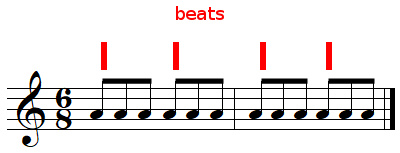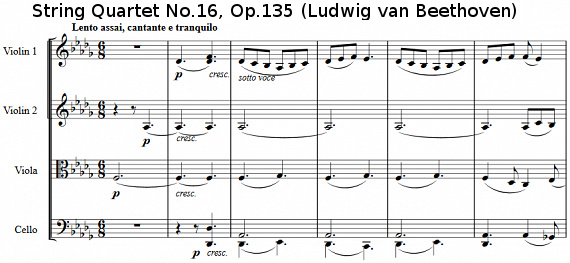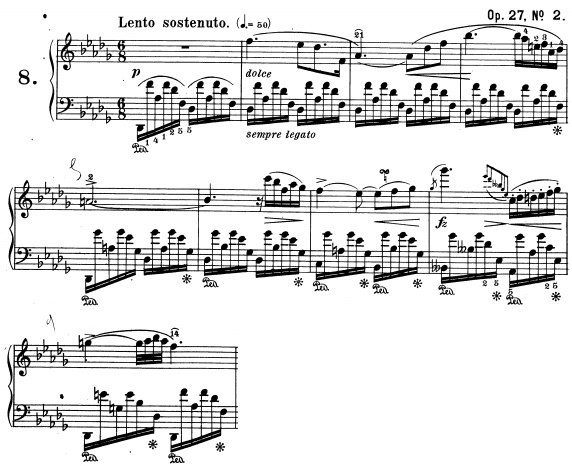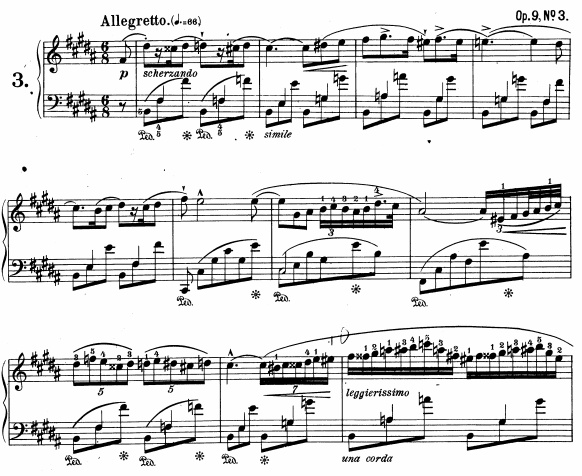Explanation of 6/8 time signature
In the article time signature, this is explained that:
- the top number indicates the number of time units in a measure (bar 
- the bottom number determines the unit of time.
We can visually translate 

That is to say that there are 6 eighth notes 

But, what is not indicated in the time signature is that 
- Simple meter (or simple time) is a meter where each beat in a measure can be subdivided by two.
- Compound meter (or compound time) is a meter where each beat in a measure can be subdivided by three.
A beat with 6/8 time signature can be divided by two or three, it depends on the context.
Here are the beats for a simple meter 

In that case (simple meter):
- 1 eighth note 

- 2 sixteenth 

- 1 dotted quarter note 

- and so on...
Here are the beats for a compound meter 

- 1 dotted quarter note 

- 1 dotted half note 

- 3 eighth note 

- 6 sixteenth 

- and so on...
In the vast majority of cases, a 6/8 bar is a 2 beats compound measure, where each beat equals a dotted quarter note 


Examples found in famous works
Ludwig van Beethoven, String Quartet N° 16, Opus 135
The movement Lento assai, cantante e tranquilo from String Quartet N° 16, Opus 135 by Ludwig van Beethoven uses the 6/8 time signature:

This musical sample in D flat major was recorded by the Borromeo String Quartet (source, CC BY-NC-ND 3.0 license)
Chopin, Nocturne opus 27 n°2
Frédéric Chopin's Nocturne opus 27 n°2 in D flat major uses the 6/8 time signature:

(Royalty free sound sample performed by pianist Samson François in 1964, Creative Commons Zero 1.0 license, source)
You will notice the use of double flats in measure 8, and the use of a gruppetto in measure 7.
Chopin, Nocturne opus 9 n°3
Frédéric Chopin's Nocturne opus 9 n°3 uses the 6/8 time signature:

(Royalty free sound sample performed by pianist Samson François in 1964, Creative Commons Zero 1.0 license, source)
You will notice the use of double sharps, just after the anacrusis, as well as the use of rhythms known as siciliano rhythms.



I am wondering if music written in 6/8 time sounds the same as that written in 6/4 time? If they do sound the same because they both consist of 2 groups of three notes why would a composer choose to write in one or the other? Many thanks.
1 anwser(s) :
sometimes composers preferred a 3/8 to a 3/4, but I can't tell you why...
Reply to this/these comment(s)